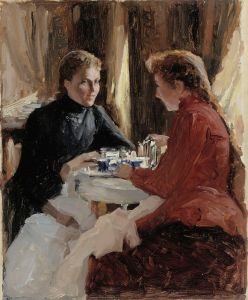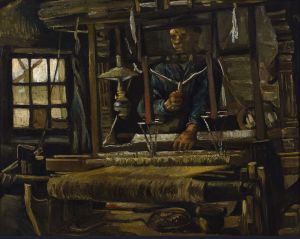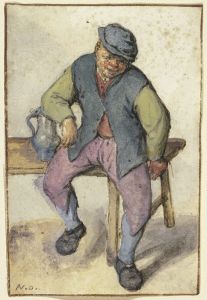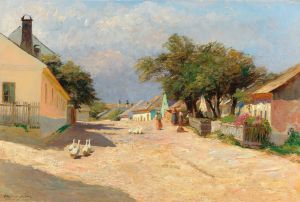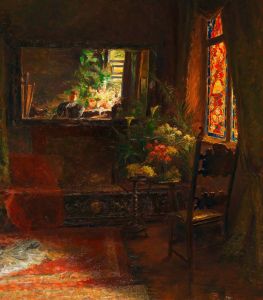
Study of a peasant woman returning home
A hand-painted replica of Olga Wisinger-Florian’s masterpiece Study of a peasant woman returning home, meticulously crafted by professional artists to capture the true essence of the original. Each piece is created with museum-quality canvas and rare mineral pigments, carefully painted by experienced artists with delicate brushstrokes and rich, layered colors to perfectly recreate the texture of the original artwork. Unlike machine-printed reproductions, this hand-painted version brings the painting to life, infused with the artist’s emotions and skill in every stroke. Whether for personal collection or home decoration, it instantly elevates the artistic atmosphere of any space.
Olga Wisinger-Florian was an Austrian painter known for her contributions to the Impressionist movement in the late 19th and early 20th centuries. Her work often focused on landscapes and scenes of rural life, capturing the natural beauty and simplicity of the countryside. One of her notable works is "Study of a Peasant Woman Returning Home," which exemplifies her skill in portraying everyday life with a sense of realism and sensitivity.
"Study of a Peasant Woman Returning Home" is a painting that reflects Wisinger-Florian's interest in the lives of ordinary people and her ability to depict them with dignity and respect. The painting likely features a peasant woman, a common subject in her work, as she makes her way back home, possibly after a day of labor in the fields. The composition of the painting is expected to highlight the woman's connection to the land, a theme prevalent in Wisinger-Florian's oeuvre.
Wisinger-Florian was part of a broader movement of female artists who began to gain recognition in the male-dominated art world of the 19th century. Her work was celebrated for its vibrant use of color and light, characteristics that align with the Impressionist style. She was associated with the Austrian Impressionists and was a member of the Vienna Secession, a group that sought to break away from traditional academic art and embrace more modern, avant-garde approaches.
The artist's background in music, having initially trained as a concert pianist, may have influenced her artistic style, lending a rhythmic and harmonious quality to her compositions. This musicality can be seen in the way she arranges elements within her paintings, creating a sense of movement and flow that guides the viewer's eye across the canvas.
Wisinger-Florian's work, including "Study of a Peasant Woman Returning Home," is significant not only for its artistic merit but also for its contribution to the representation of women in art, both as subjects and creators. Her paintings offer a glimpse into the daily lives of women in rural Austria, providing a historical record of the period's social and cultural context.
Throughout her career, Wisinger-Florian exhibited her work in numerous exhibitions, gaining acclaim both in Austria and internationally. Her paintings were well-received for their technical skill and emotional depth, earning her a place among the notable artists of her time. Despite the challenges faced by women artists in gaining recognition, Wisinger-Florian's legacy endures, and her work continues to be appreciated for its beauty and insight into the human experience.
In summary, "Study of a Peasant Woman Returning Home" is a testament to Olga Wisinger-Florian's talent and her ability to capture the essence of rural life with empathy and artistry. Her contributions to the Impressionist movement and her role in advancing the visibility of women in the arts remain influential, making her an important figure in the history of art.





